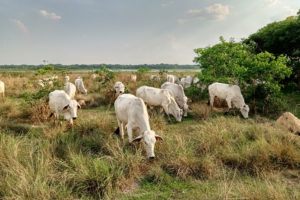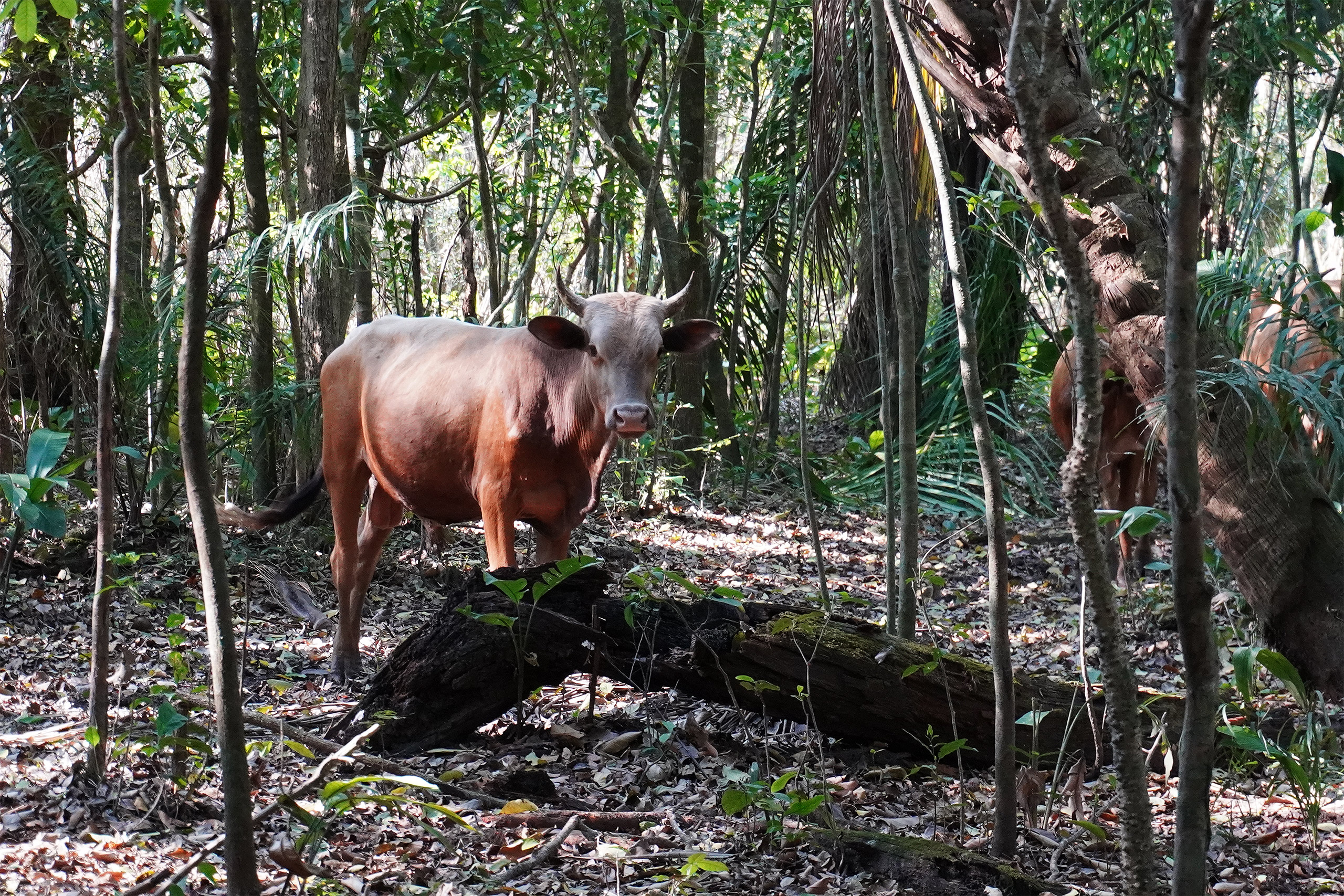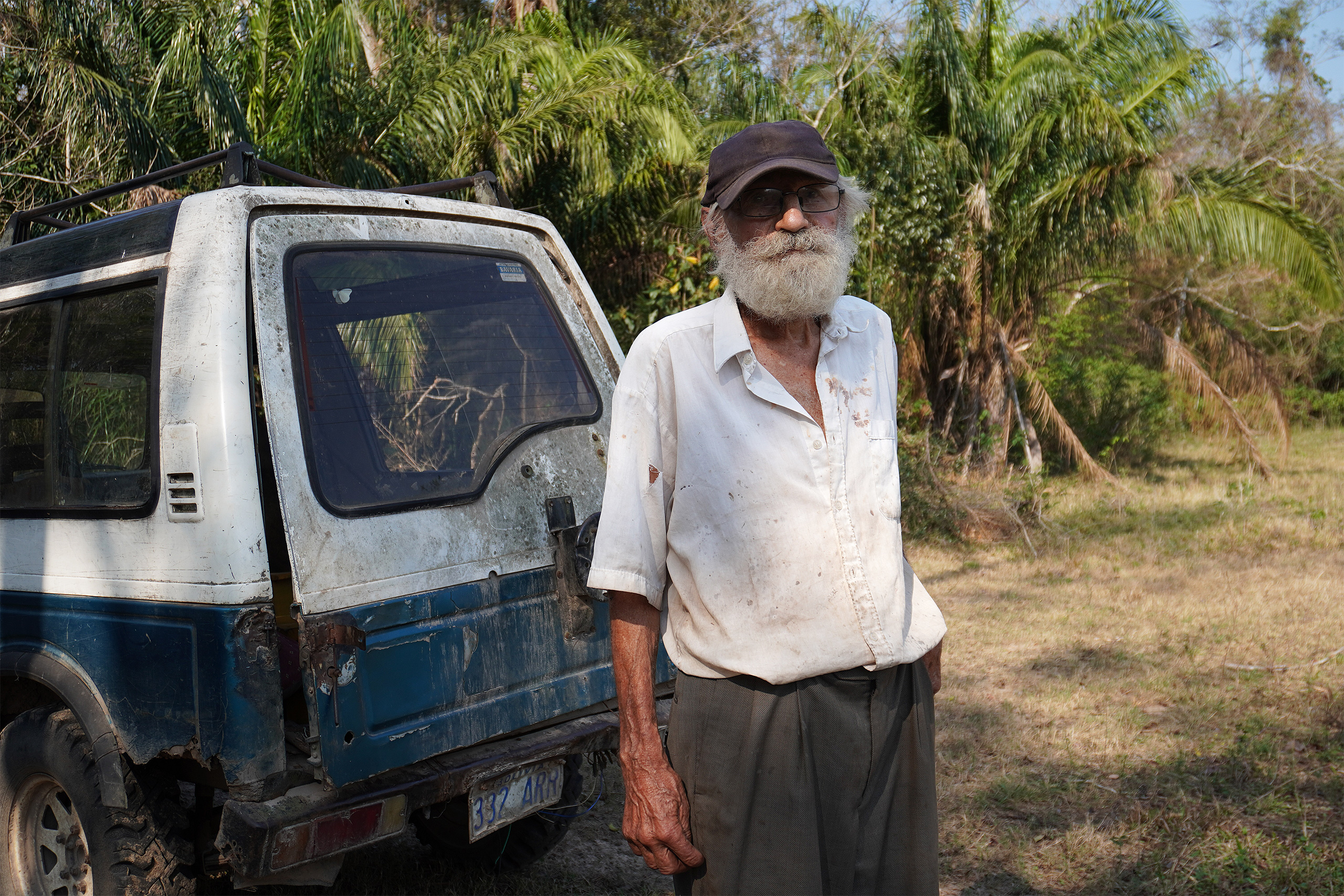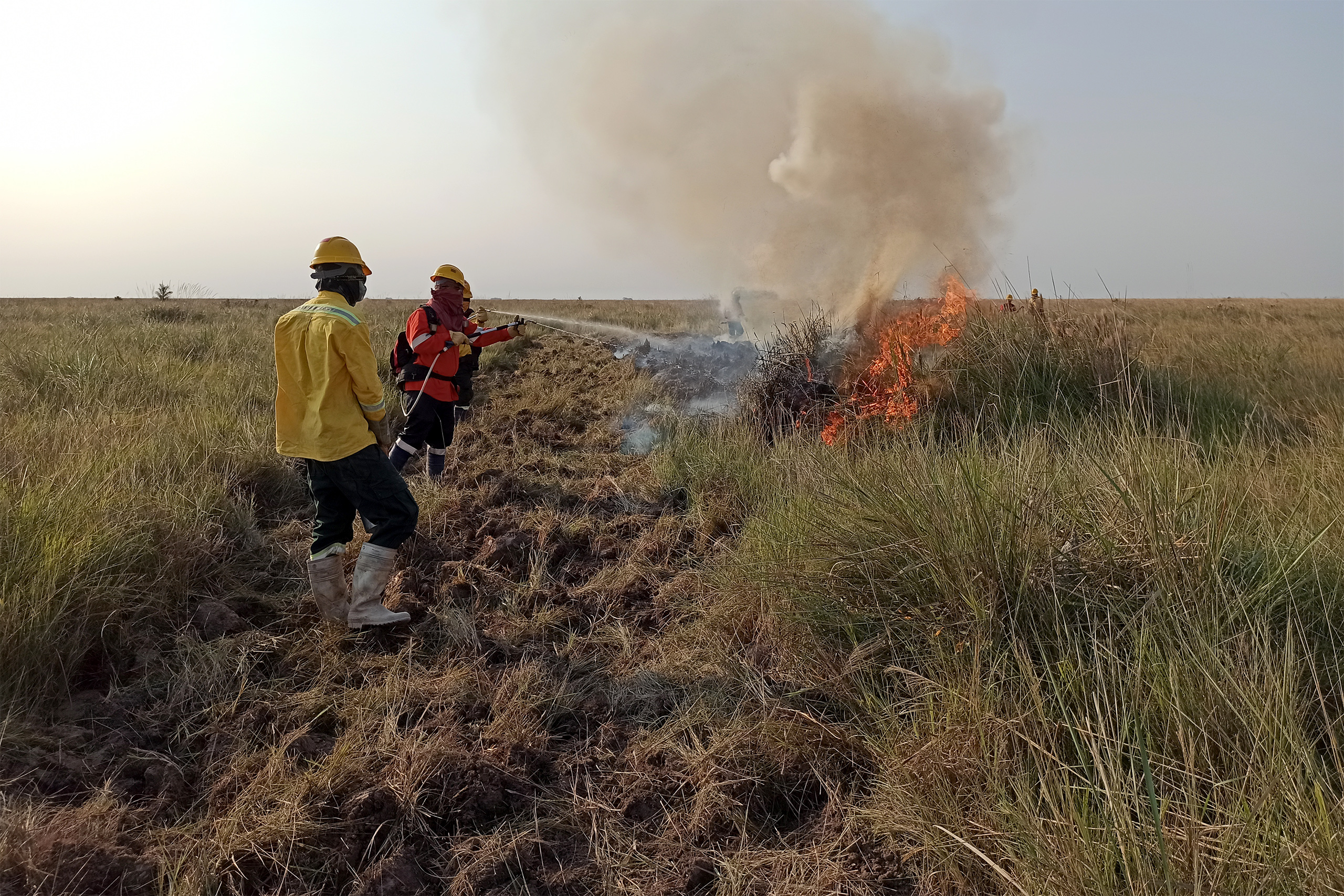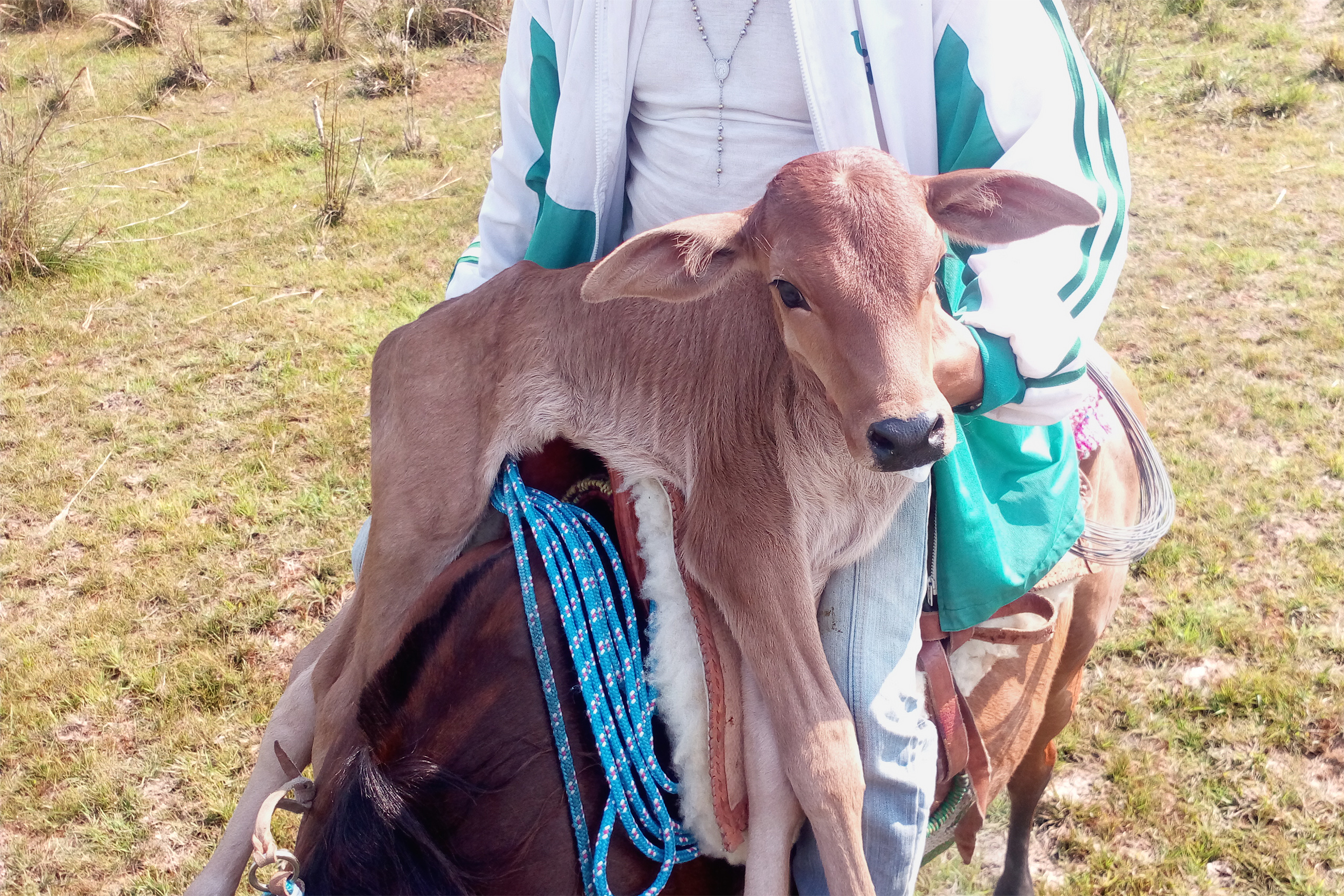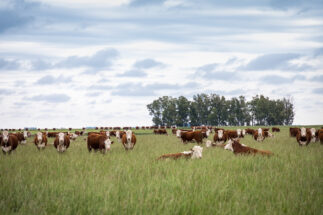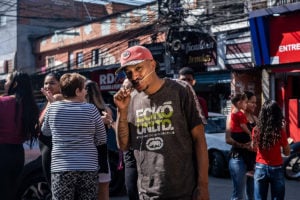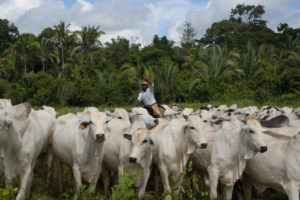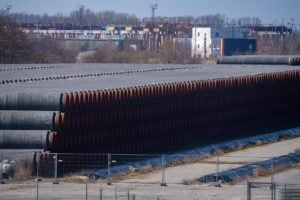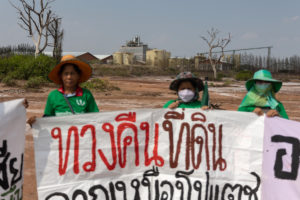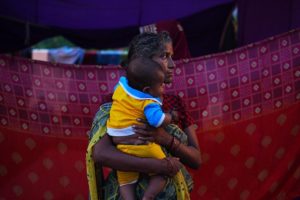Sitting in the shade, Heinz Teetzen bites into a fresh watermelon to beat the heat. It is a weekend in late September and, unusually for the beginning of spring, thermometers are climbing as high as 41C, with temperature alerts issued in seven of the nine departments in Bolivia.
The 86-year-old German, who has lived in Bolivia for more than 30 years, believes that the extreme heat is a consequence of the forests being cleared to make way for agriculture and livestock. In fact, the Juan Deriba farm which Teetzen owns, 124 kilometres from the country’s largest city, Santa Cruz, is an island of sorts, in the middle of expanses of land planted mainly with soy and rice – but also home to cattle, which graze on vast pastures.
Teetzen’s concerns became more acute a few years ago. In 2019, Bolivia suffered one of the decade’s worst forest fires due to factors such as the authorisation of “controlled burns”. That year alone, 5.7 million hectares of forest burned, with land clearances said to have been encouraged by the growing beef export market, including to China, which welcomed its first shipments from Bolivia that year.
Deforestation in Bolivia has reached similarly significant levels in recent years, driven by agricultural expansion and irregular seizures of public lands, among other factors. But such losses have also prompted various organisations and individual farmers to seek to employ more sustainable methods of livestock farming, which target forest-friendly practices while remaining productive.
Record sales and government goals
After a process of diplomatic negotiations and preparation to help Bolivian producers meet Chinese import requirements, the first shipment of 48 tonnes of beef to China was finally made in August 2019. The then-president Evo Morales described it as a “historic” event.
Since then, Bolivia’s overall beef exports have surged. From 1,174 tonnes of beef in 2012 at a value of US$6 million, the country’s farms collectively went on to ship 17,542 tonnes, worth $82.5 million, in just the first half of this year – 65% of which was bound for China, according to preliminary data from the Bolivian Institute of Foreign Trade (IBCE) seen by Diálogo Chino. In 2020, 84% of Bolivian beef exports were destined for China.
Bolivia’s record sales have coincided with deforestation in recent years, mainly in Santa Cruz, the department where most meat for export originates. In 2022, the country ranked third in the world for primary forest loss, at 385,000 hectares, only behind Brazil and the Democratic Republic of Congo – a position it continued to hold in 2023.
Some of this loss has been backed by government policy: in July 2019, on the eve of exports to China opening, the Morales government issued the decree that authorised the clearing and “controlled burning” of forests for agricultural activities on private and community lands. This was, however, repealed one year later by his successor, acting president Jeanine Áñez, during another spate of forest fires, but her new decree did not explicitly prohibit burning for agribusiness purposes.
Despite the alarming trends of deforestation, the country is still pursuing its cattle farming goals aggressively. The goal of reaching two head of cattle per inhabitant – up from the current estimate of 0.9 – is one championed by Patriotic Agenda 2025, a document that sets out the economic and social guidelines for the country’s bicentenary year.
Sustainable cattle growth?
Before Teetzen bought the 690-hectare Juan Deriba farm, it was used for logging. In the areas that were previously deforested, the farm now aims to practise a more sustainable type of cattle farming. Teetzen says this method eschews the use of hormones for the animals’ growth, nor does it fatten them with special feed mixes in restrictive stables. The farm also rotates pastures to allow vegetation to regenerate.
This has allowed areas of primary forest and large patches of Chiquitano and Amazonian secondary forest – vegetation that develops after major disturbance by human or other forces – to be relatively well preserved in Juan Deriba, according to a study by the Noel Kempff Mercado Natural History Museum in Santa Cruz.
Teetzen began this practice after unsuccessful attempts to produce rice, soy, beans and corn without agrochemicals. At that time, in the late 1990s, “there was no market for organic” produce, he says. Instead, he decided to find a method of farming livestock in a way that is productive while reducing environmental impacts, starting off with 40 head of cattle.
Today, he has around 300 animals, including cows, steers and calves. They reach the Santa Cruz domestic market at a price similar to that of an animal raised in the traditional way: around 20 bolivianos (US$3) per kilogram, despite it costing more to raise them and requiring a significant additional effort. Even so, Teetzen says it is worth it, adding that he believes it is better to take care of the little forest that remains on his property: “In my country there is no forest left, there is nothing left.”
The key difference between Teetzen’s technique and traditional cattle breeding is that his cattle take up to three or four years to reach maturity naturally, while others are ready to be sold in two years because, as he explains, “they are fattened with hormones and balanced feed [composed of cereals and minerals], with sorghum, corn and soy, in closed stables.” Keeping and feeding cows in confined spaces has long been considered mistreatment by animal rights groups, and can lead to increased incidences of disease transmission between cattle, as well as environmental harm.
Certifying cattle reserves
In the Bolivian market, both traditionally and sustainably produced varieties of beef ultimately enter the same production chain. While traditional livestock farming drives deforestation, for example, sustainable alternatives seek solutions and require greater effort to reduce environmental impacts. The separation of production chains is something that Bolivian conservation organisation Armonía seeks to change through certification, starting in the north-eastern department of Beni, Bolivia’s second-largest cattle-producing area after Santa Cruz.
The organisation is currently “well on the way” to developing a model ranch at its Barba Azul Reserve, says Tjalle Boorsma, Armonía’s director of conservation. Established by Armonía in 2008, the reserve is where the organisation has been engaging in experimental sustainable cattle ranching strategies within floodplains. Named for the blue-throated macaw native to the area, Barba Azul Reserve is situated in the heart of the Llanos de Moxos, an ecosystem of savannas and wetlands in the Bolivian Amazon, the largest section of which is in Beni.
The organisation sees its strategy as viable as the Llanos de Moxos has never been deforested. Its ecosystem, described as a “floodable savanna” due to its seasonal flooding, are pastures interspersed with forests, and dotted with small islands of forest and swamps. Research by the Working Group for the Llanos de Moxos notes that the area’s “vast floodplains offer abundant natural fodder for animals and protected forest areas, while… the flood season and droughts result in a complex and challenging context for production.”
The rotational management of cattle in different pastures so that they feed on native grasses, which regenerate naturally, is said to have produced good results so far, as has the strategic use of planned and controlled fires – burning being a natural part of the ecosystem of the native pastures – to reduce the overgrowth of the grass.
Similarly, small animal-friendly changes have also increased productivity, such as having a square pen instead of a round pen to reportedly reduce stress, or giving cows longer breaks between birthing calves than is the case in traditional cattle farming, Boorsma says. “One example is that, on traditionally managed farms, calf production is 50%. In our case, we are already at almost 70%, just by implementing a different type of management.”
Once they are born, the calves are sent for fattening at the Laney Rickman Reserve, another Armonía site for the blue-throated macaw, where the pastures are said to be more nutritious and fertile due to the soil’s location next to the Mamoré River. When the animals mature, those cattle are sold in Beni’s capital, Trinidad. “Our cows will not go to Santa Cruz, where fattening is done on non-native pasture where there used to be Chiquitano forest,” notes Boorsma. The organisation is in the process of developing a sustainable meat certification for their cattle farming.
Regenerating deforestation-hit areas
Meanwhile, in Roboré, a region of Santa Cruz that has been hard hit by fires and deforestation in recent years, the Foundation for the Conservation of the Chiquitano Forest (FCBC) is carrying out a regenerative livestock initiative.
Hermes Justiniano, supervisor of the FCBC’s PRIAS programme, which focuses on innovative regenerative practices for sustainable agriculture, explains that the aim is to improve the biological qualities of the soil through organic means. They are currently working with 40 properties – 10 livestock farms and 30 agricultural properties – whose owners decided to join the project to engage in five specific practices. Four of these practices are: ceasing the use of mechanised tillage tools; keeping the soil constantly covered with a crop; maintaining a diversity of plants; and avoiding agrochemicals.
The fifth, focused on livestock farming, is Voisin rational grazing, a technique that subdivides pasture plots for the rotation of cattle, to allow for natural regeneration of consumed grass.
Justiniano talks of the benefits of such regenerative farming: “If you do it right, you’re going to have much improved productivity, and lower costs for pesticides and supplements.” In his view, this is “the only way” to keep soil productive without the need for deforestation. Most farmers and ranchers, he says, “work the soil hard with ploughs, harrows, fertilisers and pesticides. Then in five or six years, the soils are exhausted, and they need to go and deforest further.”
More heat, less water
While the economic future is promising for Bolivia’s beef exports, it is looking less bright for its environment. A recent study by the NGO Fundación Tierra warns that Santa Cruz will suffer higher temperatures and more extreme droughts due to agriculture and deforestation.
Drought is becoming more visible this year, because there is not enough forest to generate the humidity needed for rainMarlene Quintanilla, research director at the Friends of Nature Foundation
With the impacts of climate change worsening, droughts are going to intensify, notes Marlene Quintanilla, research director at the Friends of Nature Foundation (FAN). “The problem is becoming more visible this year because there is not enough forest to generate the necessary humidity for rainfall production,” she says. On the other extreme, she highlights that flooding could present problems in the near future, even in areas where there are droughts today.
Because of these issues, Quintanilla urges politicians and businesses to focus on science and research, noting that economic losses stemming from droughts and floods have already reached millions of dollars annually. “There is a lack of planning for the coming years based on scientific evidence and… practices to adapt to these changes,” she observes, such as water wells or facilities built to cope with major droughts. “The communities are suffering, but the producer is also suffering because of the loss of livestock and crops. We need to plan and join forces: business, politics, producers and governments.”
